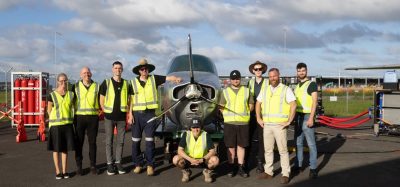Topflight results demonstrate SESAR efficiency gains
- Like
- Digg
- Del
- Tumblr
- VKontakte
- Buffer
- Love This
- Odnoklassniki
- Meneame
- Blogger
- Amazon
- Yahoo Mail
- Gmail
- AOL
- Newsvine
- HackerNews
- Evernote
- MySpace
- Mail.ru
- Viadeo
- Line
- Comments
- Yummly
- SMS
- Viber
- Telegram
- Subscribe
- Skype
- Facebook Messenger
- Kakao
- LiveJournal
- Yammer
- Edgar
- Fintel
- Mix
- Instapaper
- Copy Link
Posted: 21 February 2014 | NATS | No comments yet
The first phase of the TOPFLIGHT trial has successfully demonstrated the feasibility and benefits of key elements of the SESAR concept in a real operational environment…


The first phase of the TOPFLIGHT trial has successfully demonstrated the feasibility and benefits of key elements of the SESAR concept in a real operational environment.
The NATS led trial, in which 100 British Airways flights across the North Atlantic were subjected to gate to gate optimisation using elements of the SESAR concept, resulted in estimated savings of up to half a tonne of fuel per flight.
The optimisation included providing an initial Oceanic profile before departure; the use of continuous climb and descent profiles and direct routings; use of more flexible Oceanic clearances; the flexible use of military airspace; and reduced engine taxiing.
Joe Baker, the NATS project manager, said: “We’re delighted with the results because they demonstrate that elements of the SESAR concept are truly scalable and can deliver substantial benefits to airspace users in today’s operational environment.”
The project has analysed a huge amounts of data on each flight in order to understand where efficiencies were made.
“While the results understandably vary from flight to flight, we are thrilled that 25 per-cent were able to achieve every element of optimisation, while 70 per-cent were able to achieve at least half,” Baker added.
As well as NATS and British Airways, the TOPFLIGHT partners include the Canadian air traffic service NAV CANADA, Airbus ProSky, Boeing and Barco Orthogon. It is also being supported by the Irish Aviation Authority and part funded by the SESAR Joint Undertaking.
Following the success of phase one, the results will be fed back into the SESAR programme in preparation for initial implementation.
Phase two of TOPFLIGHT will begin in March, with a trial focussing on reducing the amount of time aircraft spend in holding stacks at Heathrow. For three months, arriving aircraft will be slowed en-route to London by air traffic controllers working in France, the Netherlands, Scotland and Ireland.
It is thought to be the first cross-border arrivals management trial of its kind anywhere in the world.
Baker said: “The next phase of the project is very exciting. It will see NATS collaborating with our partner ANSPs to cut orbital holding times at Heathrow by around 25%, saving fuel, cutting carbon emissions and reducing aircraft noise over the south east of England.”
The TOPFLIGHT project will be showcased at the World ATM Congress in Madrid, 4-6 March.
To learn more about NATS’ TOPFLIGHT Project you can read Joe Baker’s article in IAR’s ATC/ATM Supplement

















